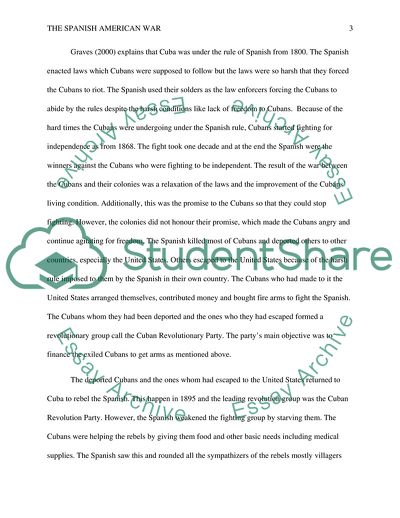Cite this document
(The Spanish-American War, 1898 Literature review Example | Topics and Well Written Essays - 1750 words, n.d.)
The Spanish-American War, 1898 Literature review Example | Topics and Well Written Essays - 1750 words. https://studentshare.org/history/1806526-the-spanish-american-war
The Spanish-American War, 1898 Literature review Example | Topics and Well Written Essays - 1750 words. https://studentshare.org/history/1806526-the-spanish-american-war
(The Spanish-American War, 1898 Literature Review Example | Topics and Well Written Essays - 1750 Words)
The Spanish-American War, 1898 Literature Review Example | Topics and Well Written Essays - 1750 Words. https://studentshare.org/history/1806526-the-spanish-american-war.
The Spanish-American War, 1898 Literature Review Example | Topics and Well Written Essays - 1750 Words. https://studentshare.org/history/1806526-the-spanish-american-war.
“The Spanish-American War, 1898 Literature Review Example | Topics and Well Written Essays - 1750 Words”. https://studentshare.org/history/1806526-the-spanish-american-war.


